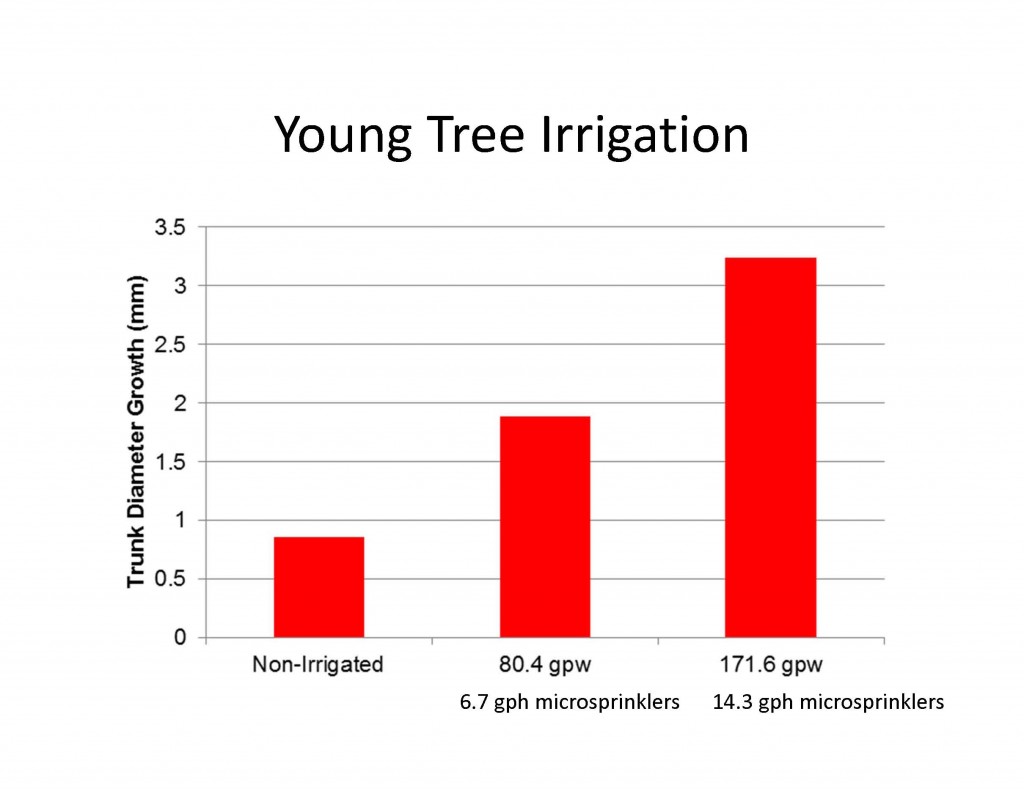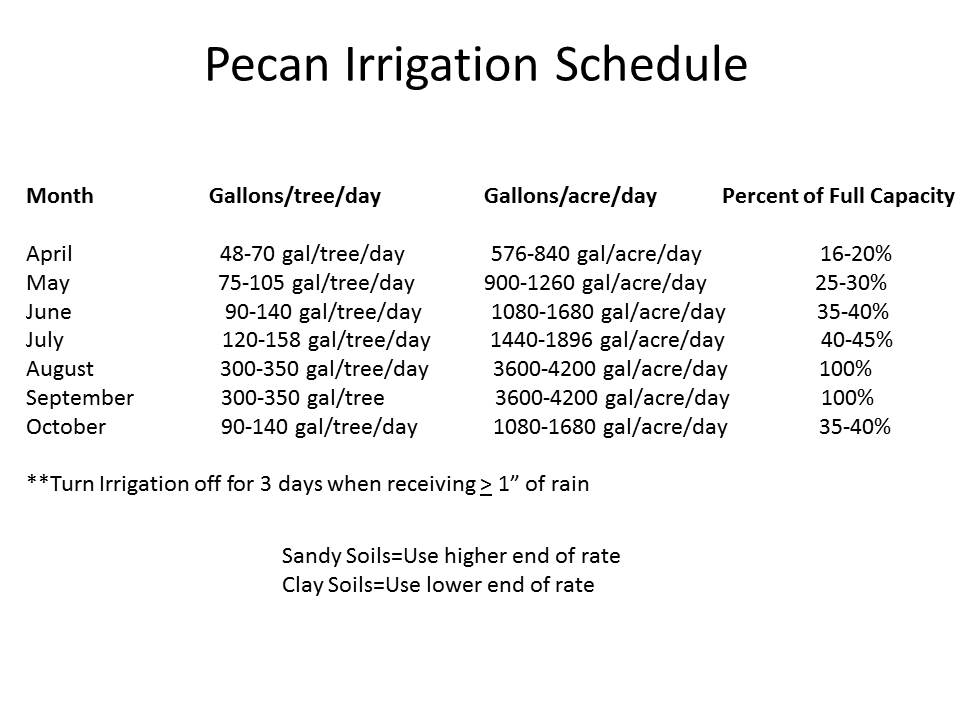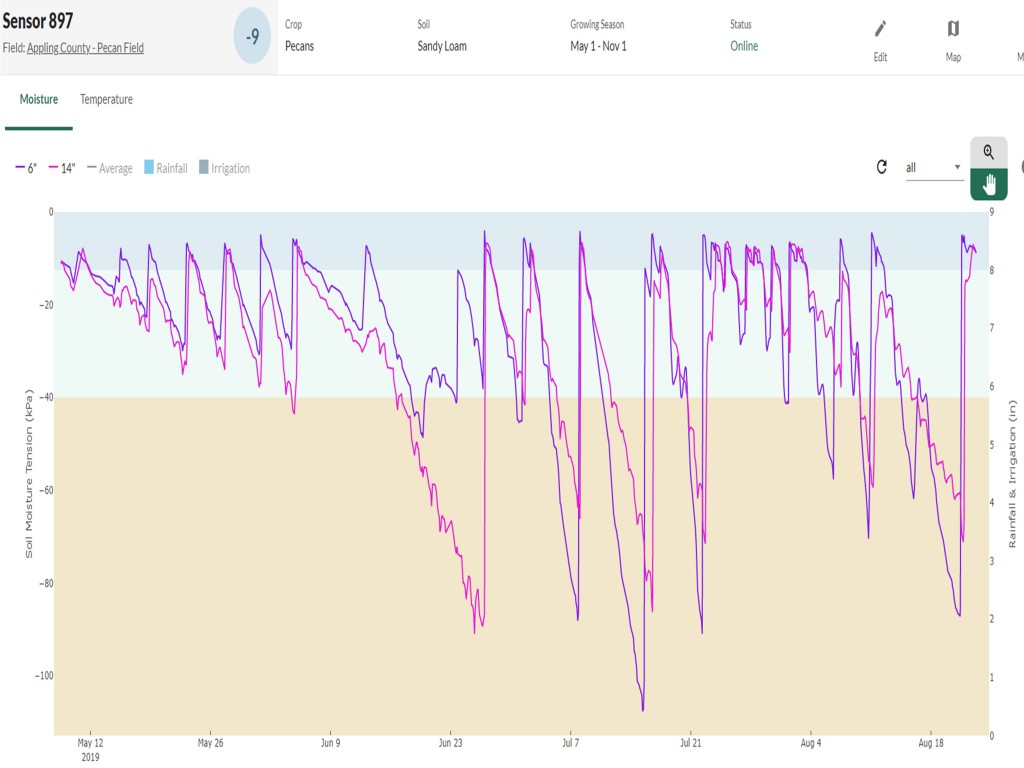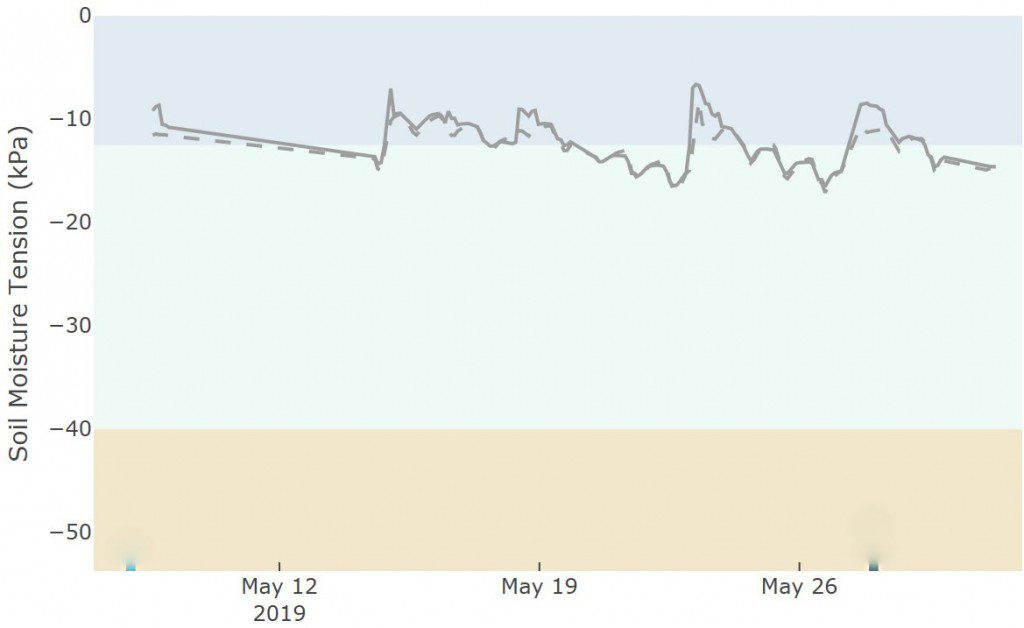Over the last years I’ve been working with UGA and involved in pecans, I hear many ideas from new and old growers on irrigation. Some say, “don’t water the tree so the roots will be stronger.” Others have said that irrigation is what makes trees fall over during storms. Well, I won’t say that both of those statements are entirely false, but from a production standpoint we have to have irrigation.
New Trees
In 2014 UGA began to determine irrigation requirements for trees grown under Southeastern U.S. conditions. Looking at trees in the year of planting (1st year trees), microsprinklers were used that supplied either 6.7 gallons per hour (gph) or 14.3 gallons per hour (gph) and compared these with non-irrigated trees. Trees were irrigated 3 times per week (M,W, and F) at 4 hours per application. Results showed that young pecan trees respond to more water than what most expect. Trees receiving 80 gallons per week had significantly more growth than non-irrigated trees. However, trees receiving 172 gallons per week had even more growth than those receiving 80 gallons per week. It is recommended for those orchards with irrigation to apply a minimum of 80 gallons per week. If you’re still manually hauling water per tree then try to get at least 50 gallons per tree per week. This will keep the tree alive, but won’t give optimal growth. With irrigation system installed remember young pecan trees require as much as 172 gallons per week for optimal growth on a loamy sand soil.

Mature Trees
Right now pecan trees benefit from irrigation, but only need a fraction of the amount they require as the crop begins to develop. In June the demand begins to increase. This demand will continue to increase through the nut sizing period and peaks during the kernel-filling process in August and September. Follow the schedule below for mature trees.

There are times trees may require more water than recommended. The below picture is from a soil moisture sensor in 20 year old pecan trees last season.

The blue arrows show when irrigation occurred. You can see how quickly moisture declines. After irrigating it only takes about 2 days and it’s time to irrigate again. In the below picture is the sensor May through August. You can see how water use increases dramatically as we head into June and summer months.

Basically, anything below -30 is considered dry requiring irrigation. The graph shows how many times we fell below that level, especially during the summer. In this same orchard I have two other sensors in some 60 and 80 year old trees. Below is a screen shot from that sensor.

The soil type doesn’t vary much. The only difference is water demand. Surprisingly, the 20 year old trees are seemingly demanding more water than the much larger 80 year old trees. You can see in the graph that the moisture level never drops below about -12. Granted, the irrigation does run more often in the older trees than in the younger trees which does impact the soil moisture, but you can see that the moisture level doesn’t drop very low before going back up. Irrigation could be reduced a little based on what the sensors are showing.